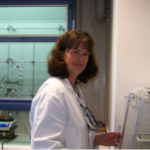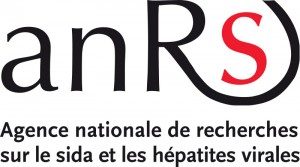Présentation
TMPK from Mycobacterium tuberculosis belongs to the NMPK family, which was chosen as potential targets for the development of new antimicrobials (see “Nucleoside monophosphate kinases” project).
Based on the 3D-structure of TMPK from M. tuberculosis in complex with one of its natural substrate dTMP obtained in 2001 (Li de la Sierra et al, 2001), we have started a drug design program, as well as the in silico screening of chemical libraries (coll. with G. Labesse, Montpellier). TMPK of M. tuberculosis was also used to develop and validate bioinformatics programs (coll. with D. Douguet and G. Labesse; Douguet et al, 2005). This program was supported by PTR-46 “Nouvelles cibles pour le développement d’inhibiteurs spécifiques contre la tuberculose” (coordinator H. Munier-Lehmann), Grand Programme Horizontal « Tuberculose » (coordinator S. Cole) and Action concertée CNRS “Molécules et cibles thérapeutiques” (coordinator J.P. Samama, IPBS-CNRS Toulouse).
Different classes of molecules have been synthesized as substrate mimics (in coll. with P. Herdewjin and S. Van Calenbergh, Belgium and M. J. Perez-Perez, Spain): thymidine analogues, benzyl-thymine derivatives predicted by a drug design program (LEA3D) and bisubstrate inhibitors. The inhibitory efficiency of the synthesized compounds was determined in vitro on the recombinant enzyme using a coupled spectrophotometric assay. The compounds exhibiting the highest affinities were tested on the human TMPK for specificity measurement.
Key residues governing the substrate specificity of M. tuberculosis TMPK have been identified (Munier-Lehmann et al, 2001; Pochet et al, 2002; Pochet et al, 2003). Original molecules acting in vitro as selective inhibitors of M. tuberculosis TMPK (Familiar et al, 2010; Familiar et al, 2008; Haouz et al, 2003; Kogler et al, 2012; Pochet et al, 2003; Toti et al, 2013; Van Calenbergh et al, 2012; Van Poecke et al, 2011; Vanheusden et al, 2004; Vanheusden et al, 2003; Vanheusden et al, 2002) and on mycobacteria strains (Gasse et al, 2008; Gasse et al, 2007; Van Daele et al, 2006) have been developped. Around 500 compounds (mainly thymidine derivatives) have been tested on TMPK of M. tuberculosis. The most potent compounds against M. tuberculosis TMPK have Ki values in the micromolar range and an MIC50 of 7 µg/ml against M. bovis (BCG) and H37Rv strains. These molecules could represent a new class of antituberculosis agents. We are currently working on further modifications and optimizations of molecules (in collaboration with S. Van Calenbergh; Song et al, 2016; Song et al, 2018; Jian et al, 2019; Jian et al, 2020; Jian et al, 2020).






